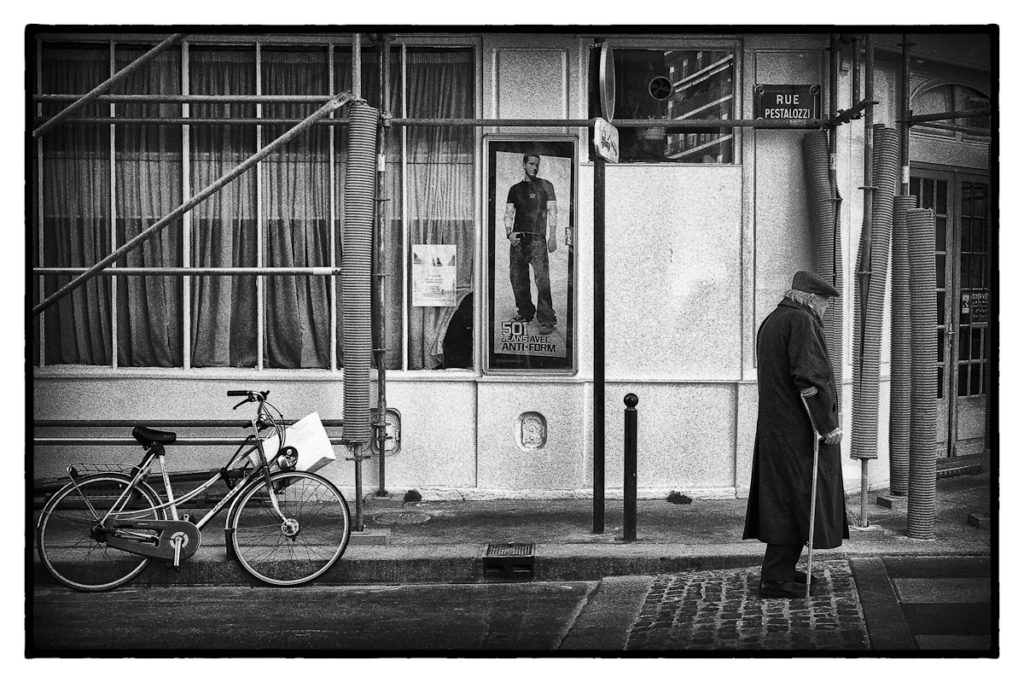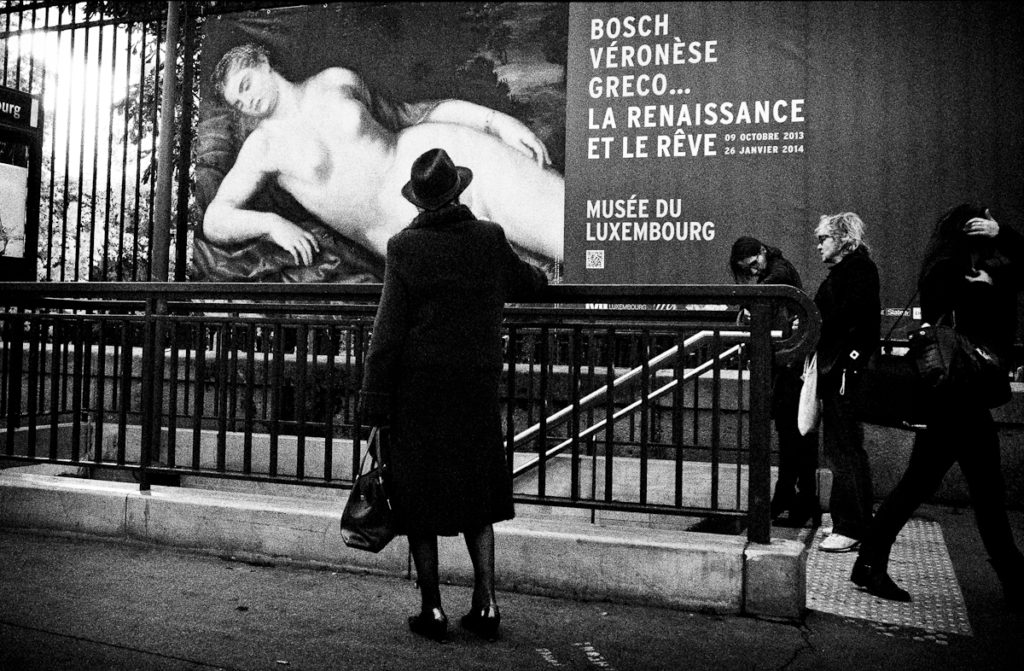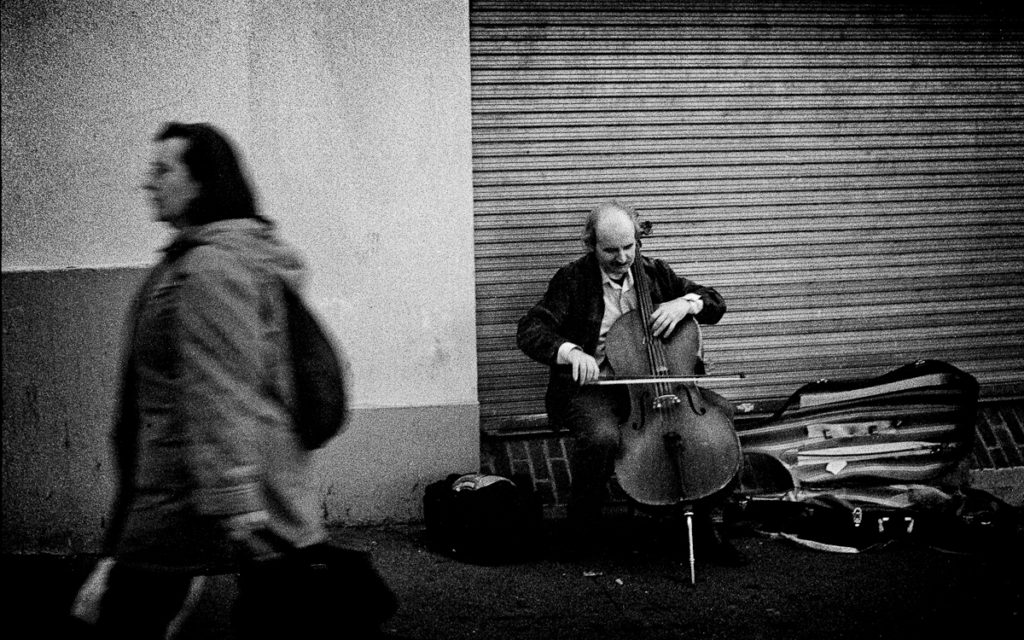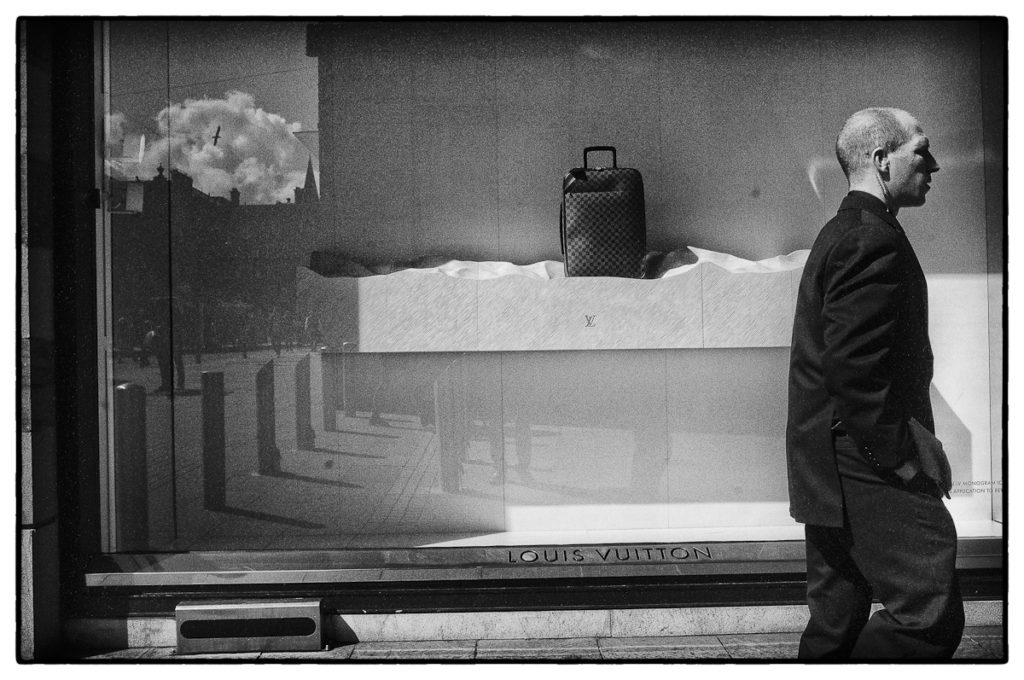Photography has a unique relationship to “truth.” This is the point of much of the philosophical discourse that’s grown up around the medium. It’s, at bottom, what thinkers diverse as Wittgenstein, Satre, Sontag, Barthes, and Baudrillard were exploring. A painter is unlikely to ever experience the same philosophical angst because a painting is a creation in the way that photography is not. From a truth perspective, photos are different than paintings…or any other works of “Art” for that matter. While you can take a photograph that is a complete artifact, (actually, as semiotic philosopher Jean Baudrillard claims, in the digital age all photographs are complete artifacts) to the uneducated eye it can appear as an objective depiction of whatever was presumably in front of the camera’s lens. We naively assume it tells the truth (although this has become increasingly problematic in the digital age – witness the “deepfakes” discussed here and how seductive they are to the untrained eye, or more precisely, the unenlightened, naive viewer).
There’s also a more fundamental argument, over and above issues of process (i.e. is the truth value of digital different than that of analog?) taken up by Austrian-British Analytic Philosopher Ludwig Wittgenstein, about the inherent truth value of photography itself. The naive view would be this: a camera is a machine that faithfully records what is in front of it and then displays just that. If this is so, then any problems with it “telling the truth” are the consequence of some sort of manipulation by the photographer. The more nuanced view, the view shared by those of us with experience and knowledge of the process, is that a camera is not an objective recording machine. It never truly objectively records what is in front of it, given both the decisions made before and the steps that lie between, tripping the shutter and the resulting image. What we get is, at most, someone’s version of the truth. Wittgenstein calls it a “glimpse” not a full view.
*************
Photographs don’t lie per se. To believe so would be to deny any truthfulness to photographs. Photographs do present a truth – the photographer’s truth. A photographer’s truth is what the photographer wants us to see. The issue is not whether that truth has any relation to the Truth, but rather how the viewer relates it to his truth (as I discussed here).
If photography presents the photographer’s truth, what is his responsibility, if any, to the viewer? To a large extent, a photographer’s responsibility will derive from his understanding of how the medium operates. If you’re a “documentary photographer” you believe the camera to be a tool that will faithfully record what is in front of it, and, as such, you’ll put it out that way and expect viewers to demand the same. If, however, you believe your work has a creative dimension, is your interpretation of reality and not a depiction, then it’s about being truthful to your intentions, which are also based on a certain understanding of what your camera does, the creative possibilities it affords you. While the photographer needs to understand and master his intent, he also needs to master the process he chooses to employ – whether a view camera, a digital camera, a film Leica or an iPhone – much like a painter has to understand and master how to put pigments to canvas. A requirement of an effective presentation is that it be competently made. But, and this is what the hacks don’t get, it’s not just about technical competency.**
*************
I love the photo above. It says so many things to me, stories about desire, age, what we dream about, how the everyday doings of life can blind us to the beauty around us. To say that it represents some objective truth – about a well-dressed older woman looking at a poster on the streets of Paris – would be to miss the whole truth I want it to convey to you. While the photograph is taken from the world, it is not identical with the world. It is the product of my world, of what is embedded in my mind, my “truth.” All good photography is a viewpoint, and that is what we as viewers must engage with if we are to understand it.
The best photographs present a truth that challenges the viewer’s truth, gives the viewer a different way to see things. My responsibility is to present you with a truth to challenge your own. This is how photography becomes Art. If it sufficiently challenges you, its “Art,” even if the challenge results in you deciding it isn’t. Think of Gary Winogrand and his wonky, off-kilter photos; they’re “Art,” not because they adhere to some preconceived aesthetic, but because they force the viewer into Winogrand’s world. The creativity that creates Art is singular, and many people to this day think Winogrand is a joke. But Winogrand didn’t sit around looking at Cartier-Bresson’s photos, trying to ape his style; rather he discovered his own way of seeing things, his own truth, and he put it out there for others to see. He didn’t put it out there for others to critique, or to get advice on how to do it better. That’s for rule-bound hacks. “Fuck em,” was what he said. “That’s how I see.”
That’s where you should be going with your photography – not to please the rule-bound or appeal to the sentiments of others. And while technical competence is a necessary prerequisite, it’s not about that. Don’t confuse the two. It’s about presenting what you see in the manner you see it. Only then will your photography be true, and only then will you have said anything meaningful.
*************
My advice: Stop worrying what other people think. Worry instead about what you want to say and how you want to say it. And stop obsessing about technical solutions to creative problems. All the expensive gear – the M10 with the latest aspherical lens in the elephant skin bag – means nothing and will get you nowhere, no matter how technically competent you are, if you have nothing to say. If you have questions, go look at the usual suspects, the guys pimping themselves as “Leica Photographers,” with their simplistic conflation of technology with creativity, their aesthetic stuck at the level of technical competence, all show, little substance. They have nothing to teach you because they have nothing to say. Ignore them. Stay completely out of their orbit for fear of internalizing their banality. Better an old beater Leica with a $20 Industar in a paper bag….and a head full of ideas.
**This justifies the role of criticism. The critic is someone who considers if the work is done well, meaning done, both technically and according to the parameters of the context in which the artist places his work. Those parameters are different for different types of photography – is it a document or an expression? – and this can make it hard for viewers who aren’t privy to the context to understand it. The idea that “I could do that” originates from this contextual confusion, the mistake of conflating simple form with simple art.






Beautiful photography, Tim.
Did you always gravitate towards darkish printing or is it a recent thing? For some inexplicable reason I find myself processing darker and darker. I’m older than you, and have been tending to equate my direction, which I clearly notice, with a general slowing down of body and soul, a sense of gloom, perhaps. That may be a mistaken interpretation, though; surprising how little we really understand about our own art. In fact, I rather suspect that folks who think they know all about themselves are somewhat deluding themselves instead.
Rob
http://www.roma57.com
Thanks as always for your kind words, Rob. I think I have tended to print darker recently, although I don’t perceive it as such. It seems “normal” to me. I guess that’s all part of individual vision.Looking at the 5 photos in the piece above, I don’t see them as “darkish”. Interesting that you do.
Rob, I agree, Tim does make beautiful snaps… It is one of the reasons that I freeload onto his site… 🙂
As to the dark, contrasty printing, you might remember that Don McCullin talked about that during the recent TV biograph that has coincided with his Tate Britain show, which although violent and sad, was very striking, the man is a great snapper.
I think you are right, it is a tendency for older snappers, although the stuff that was featured here by that Dragan chap was pretty dark, and he was a junior spy in England when he did his film stuff.
It’s all about the tones.
As Tim says in the text above, forget the tools… Try to understand the intent. Which is why I don’t get all that stuff about indexicality and what not. It has nothing to to with snapshottery, far more to do with navel gazing.
If you see something that grabs you, and you only have an iPhone… Snap away.
Printing on the other hand is different, a decent print concentrates the mind more than a passing image on a screen. I wish I was more competent at printing, and less inclined to scan everything and never really understand what I have got. I have made thousands of really awful guffy snaps and amongst them no doubt, a few pearls…
None of which I feel confident in sharing, rather it is my form of meditation and the end product tends to be forgotten.
I love dark the darker the better.
The rôle of the critic: yes, but who measures the value of that critic and of his/her contributions to the wider world?
I have to conclude, from personal biases, that it comes down to whether a regularly read critic does or does not, broadly, fall in line with one’s own thoughts and opinions.
Does confirmation of one’s own position really count, can it ever be objective enough to be valid measure of a critic?
Rob
I would be interested to know where Jean Baudrillard stated that digital photographs = complete artifact… Do you have a reference to share?
<>
Your essay is concerned and provocative.
If I understand it correctly, I do not think you are opposed to the progress of technology, however there is a particular intersection between (a) the lust for the latest technology eg M10, new MM2 or Q2 (b) lust for associated bling eg elephant skin camera bag, but I can assume you also include some of Leica’s own bling, eg gold-plated, red paint, titanium, tortoise-shell etc etc and (c) the photographers voice; where as a result in this intersection there is “nothing to say”.
The next part says that if photographers want to see this void they should look out for other photographers that are “pimping themselves”, and where these same photographer’s aesthetic is, and I interpret this to be perhaps at the lowest level of Dante’s inferno, STUCK, meaning they can’t get out, because of this obsession with technical stuff (and the associated new tech and bling).
Cool. I get that. Sip a Glengoyne. Watch the landscape whizz by in a blur on the Eurostar.
There is a possible and unresolvable contradiction at the heart of this manifesto.
That we all are Leica-obsessed enough to use our valuable time to read and contribute to this blog. But that same firm we adore, Leica, has been at the heart of creating addiction by pimping its niche products with “the new” “the latest” and obnoxious “bling”.
So..
Either you are caught in this contradiction and so live with it: “yes, but I use old and cheaper Leica products which does not corrupt what I have to say, to hell with that APO red-paint bullshit”..
OR..
..you accept it and take it to its logical extrapolation eg Von Overgaard (nothing personal here, just an illustration): I think I have things to say but only with a custom M10, Noctilux f0.95, also I need the new MM2, new Q2 and titanium, gold plated, red painted lenses, elephant skin camera bags are inspirational etc etc”
Hmmm….
Thoroughly enjoyable essays, thank you!
JR
A photographic conversation…. “I was there, then, and this is a reflection of that moment. What do you think?”
You might say…”I think it looks pretty dark”. And then I might say… “Doesn’t everything?”